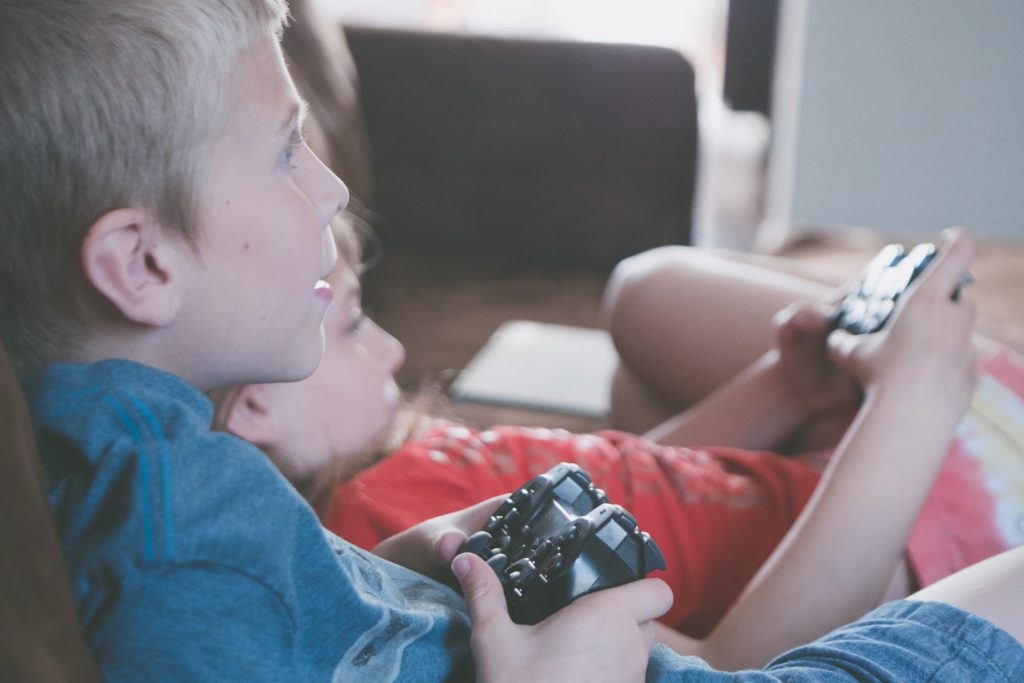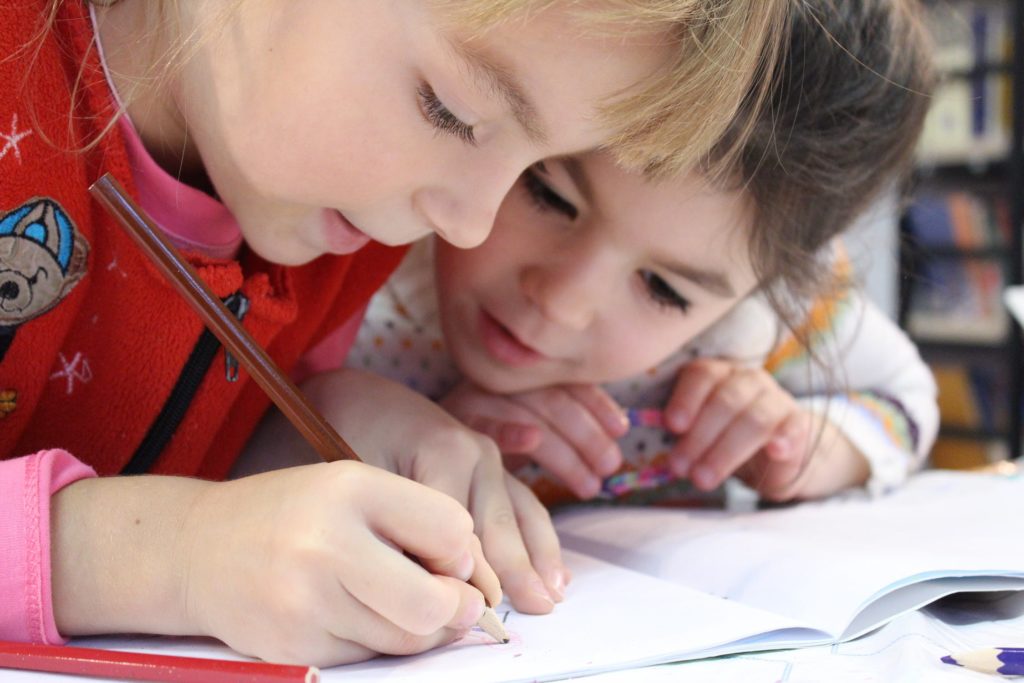News from a School Social Worker: Taking Care of our Kids

Being a kid is exciting and thrilling. There’s something new to learn at every turn. Being a kid is also incredibly hard. There’s something new to learn at every turn. Throw in a global pandemic when the whole world is learning hard lessons at every turn and you’ve got the makings for stressful stew. This isn’t the kind of comforting stew your grandma (or your friend’s grandma) used to make. This is the kind of stew that leaves everyone feeling hopeless and lost.
Blank screens
My sister, Abby Musegades, is a social worker at a school district in Minnesota. I spoke to her in February to learn what she’s been seeing and talking about with her kids. For a large part of the year, her school district was virtual. In January it opened up for the younger kids, but the older kids are still doing virtual learning. She is grateful to have at least some of them back in the room. So much trouble and pain can be hidden over the computer screen. Especially when many of them keep their videos off. I had asked her if she was seeing an increase in suicidality. She said, “I don’t know if I have necessarily seen first-hand a rise in suicidal thoughts, but I think that is absolutely related to the fact that I am not able to access students in the same way as previous years. Right now, students can avoid or hide behind their screens. In pretty much all of our 7/8 grade classes, the students keep their screens blank and only respond to questions through the chat. It is so difficult to be able to identify students who may be struggling or who may need to reach out. I also think parents are having to take on more of that role of noticing those concerns when they’re also working at the same time. We might be missing students who need support. I would say the number of risk assessments I would typically complete in the school year is similar, but I have no doubt that there are many students that I am missing.”
Increase in Anxiety and Depression
 Abby says she’s seen an increase in anxiety/depression amongst her students as well as their parents and families. “When the caregivers are overwhelmed/stressed, it impacts the children. Many of our parents have reached out to me because their children have lost interest in activities or reaching out to others. I have some students who have not reached out to their friends since the pandemic began.”
Abby says she’s seen an increase in anxiety/depression amongst her students as well as their parents and families. “When the caregivers are overwhelmed/stressed, it impacts the children. Many of our parents have reached out to me because their children have lost interest in activities or reaching out to others. I have some students who have not reached out to their friends since the pandemic began.”
Warning Signs
Her school recently held an online event for parents, caregivers, and friends about warning signs to look out for. These community events are vital to helping our youth. We can’t catch problems if we don’t know what to look out for.
Red flags: Loss of interest in activities they typically enjoyed, isolation, withdrawing, not sleeping well or sleeping too much, losing an appetite, much more irritability, low tolerance for frustration, doing poorly at school or not attending school, feeling hopeless, apathy, talking about death.
Abby says the signs to get help ASAP are: “Writing a letter or a will, saying goodbye to others, unusual cleaning out of things, giving away possessions, access to lethal means, suicidal threats or statements.”
Middle School Students
“I am most concerned with our middle schoolers. This is the time when peer interaction, exploring self-identity and individual thought are so important and they are extremely impacted by the isolation of the pandemic… If they do not have the ability to be a part of extracurricular activities, they are extremely isolated by only seeing blank screens on the computer and being at home all day.” On the other side of this isolation, Abby says she’s also “hearing a lot of concerns about separation anxiety once the students start to return. There is a general sense of fear and having to leave the comfort of their homes and parents…”
Attendance Problem
Abby says, “From a school perspective, our biggest concern is attendance. We have students who have literally not accessed their education all year. We have students who will turn on their video to a blank screen and then leave. I think students are struggling to see the purpose in school and the motivation to attend or complete any work. I am so concerned for what these next few years are going to look like for these students that did not have support at home to encourage them to access their education.”
By now, we have come to understand that even though we’ve been in the same storm, we’re not in the same boat. Abby says, “The opportunity gap is only going to further widen for our most vulnerable students.”
Finding Purpose
“Students are struggling with the “why” and the drive to learn. I am so worried that we are going to lose students’ love of learning because of how detrimental online learning has been for some of them. For many students, socializing and being around others is what motivated them to get to school and they do have that anymore. We need to help them find their motivation and purpose again.”
Now that We’re Back at School
It’s March 26, 2021 today and I checked back in with my sister. I wanted to know how things were going now that all of her kids are back in school. I wanted to know if things are better and if there are bad habits or issues from the past year of being in quarantine that are showing up now.
She says, “That’s a tricky question. I think our middle schoolers are really happy to be back, but I also think they are in a bit of a honeymoon stage.
The first few days after they returned, I noticed a lot of hoods and hats up. There was a sense of awkwardness, wanting to hide and withdraw. I have noticed more chatter in the hallways over the last couple of days. It’s starting to slowly return to a feeling of normalcy.
I am getting more requests from teachers and parents for support with peer connections. This is usually something that comes up in the beginning of the school year to help foster peer connections and feels a little strange to be doing it 2/3rds through the school year, but it’s been very apparent that these students did not feel connected to their peers or teachers during distance learning. Many of our new students still feel like they do not know anyone and it feels like the first day of school when returning to the building.
In terms of bad habits, I have seen this for students of all ages, that there is such a dependency on their screens/electronics. In a generation that is already so accustomed to a need for high stimulation, it appears to have become an even larger need and expectation for them. Work habits are still pretty rusty. We had to significantly lower academic expectations over this past year, and I think it’s going to take some time to increase that endurance for many of our students.”
How parents and caregivers can help
We hear over and over again how important structure and routine are for all of us. It is especially important for kids. If your student is still doing virtual learning Abby suggests that we “give students a visual schedule, put alarms/reminders on their iPads or phones for each class time, create task lists/checklists for the day, check-in on them when possible, reach out to supports (ask teachers to check in on the student, have a neighbor drop by), provide incentives for work completion.” She says it’s important that we, as parents, teach our kids how to ask for help from their teachers/staff. Isn’t that true for all of us? Remind our kids and ourselves, that asking for help is a sign of strength. We don’t need to do this alone. Connectedness awakens resilience.




